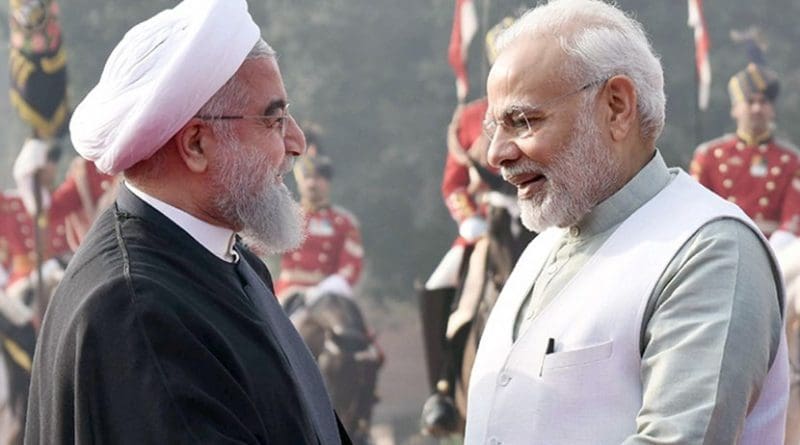The Middle East Cauldron – Analysis
By Observer Research Foundation
By Harsh V. Pant
If anyone believed that 2020 would be the year when the global flux would begin to settle down a bit, they were in for a rude shock as the Trump Administration underscored its intent to reset its terms of engagement with Iran by targeting the second most powerful man in Iran behind Supreme Leader Ali Khamenei. American drone strike of January 3 which killed Qassem Soleimani, commander of the Quds Force of Iran’s Islamic Revolution Guards Corps, and Abu Mahdi al-Muhandis, deputy chief of Iraq’s paramilitary Hashd Shaabi forces has dramatically escalated an already tense regional security environment in the Middle East with grave implications for the wider world.
Iran’s Foreign Minister Javad Zarif has declared Soleimani’s killing an “act of war,” underlining that Iran’s response would be against “legitimate targets” even as the Revolutionary Guards’ top general, Major General Hossein Salami, told crowds in Kerman during Soleimani’s burial that “the martyr Qassem Soleimani is more powerful… now that he is dead.” The 2015 nuclear deal has been made almost defunct now with Iran declaring that it would no longer abide by any of the restrictions imposed by the pact. And without losing much time, military reaction from Iran resulted in ballistic missile attack on air bases housing US forces in Iraq.
Immediate regional consequences were visible in Iraq where the parliament voted along sectarian lines to oust the thousands of American troops stationed in Iraq, leading to Trump threatening Baghdad with sanctions if US forces were forced to leave the country and the US military has announced cessation of its fight against ISIS in Iraq and suspending training of Iraqi forces. Though Iraq has claimed victory over ISIS, its resurgence remains a real possibility.
Tensions were rising in the Middle East over the past few months with US interests and assets under sustained attack from Iran and its proxies. There was growing perception that American deterrence posture had weakened in the region with a series of attacks against American and allied targets. Iranians seem to be getting bolder after shooting down a US unmanned aerial vehicle and an alleged attack against a Saudi oil facility saw America refusing to engage Tehran militarily. The last day of 2019 saw score of pro-Iranian militia storming the compound of the US Embassy in Baghdad.
Washington, therefore, has justified the killing of Soleimani as a deterrent measure, arguing that the general was “actively developing plans to attack US diplomats and service members in Iraq and throughout the region.” The idea is to reinforce American military superiority in the region as well as reassure regional allies many of whom have openly questioned if the Trump Administration might be on the verge of turning away from the Carter doctrine. But American actions have put Iran under intense pressure for retaliation even though Iran internal dynamics are hardly suited for an aggressive posture. Economic sanctions have made life extremely difficult and the country has seen widespread popular unrest because of its deteriorating economic environment. The killing of Soleimani seems to have restored nationalist sentiment back with the reformists now completely marginalised.
The most likely outcome will be proxy attacks on American assets and interests throughout the region. Iran’s regional profile has grown in recent years and its proxies dominate the regional hotspots in ways that would have been unimaginable just a few days back. Not surprising, therefore that American forces and air-defence missile batteries across the Middle East have been placed on high alert as threat of an imminent attack against US targets in the region grows. The Trump Administration is facing challenges at home with a divided polity undermining its credibility at a time of national emergency.
All regional and extra regional stakeholders have made it clear that de-escalation is an immediate necessity. But few have the levers to ensure anything substantive can be done. Iran ties with powers like China and Russia have grown in the last few years with the three nations even holding joint naval exercises neat the Strait of Hormuz in the Indian Ocean last month. Beijing was quick to condemn the “military adventurist act by the US” which “goes against basic norms governing international relations and will aggravate tensions and turbulence in the region” even as Tehran hoped China could “play an important role in preventing escalation of regional tensions.” But Beijing has shown only limited appetite so far in taking on the US directly apart from defending the Iranian nuclear deal and criticizing American unilateralism. In fact, it has reduced its import of Iranian oil dramatically after the ending US sanctions waivers last year.
India’s challenge is equally serious as its balancing act between Iran and the US will become increasingly tenuous if a conflict actually emerges out of the cinders of the present escalation. There will be serious consequences for Indian economy, its diaspora, its regional interests and its strategic alignments if the Middle East continues down the path it seems intent on following at the moment. New Delhi should be prepared to brace for all eventualities.

